#welsh first minister
Photo

I love how in the wake of disappointing midterms, Pro-Trump evangelicals have accused Biden of being the antichrist when it’s Trump who Literally requires his followers to wear a mark of allegiance to him on their foreheads.

This, you see this right here, you nutters? Mark of the beast if there ever was one.
Speaking as someone who survived a lot of religious schooling before loosing my faith and running away to something more fun, it’s like these evangelicals don’t even know the Bible. Or anything else, for that matter.
God, if you’re up there: fuck this one guy in particular.
#While I’m no longer religious I do know enough about Jesus to know that being a good socialist is a pre-requisite for being a good Christian#seriously I made it a good way thought seminary before I realised it was a shitshow and quit#I lost my faith when our minister mistook my friend speaking Welsh for speaking in tongues and declared it a miracle#And a camel shall pass thought the eye of a needle before a rich man shall enter the kingdom of heaven#drive the moneylenders out of the temple#you cannot hold both love of god and love of money in your heart#Trump = Mammon#Did anyone else have their first homosexual encounter at bible camp I feel like I can’t be the only one?#Content warning: cheeto jesus#content warning: trump
0 notes
Text


Propaganda
Hermione Baddeley (Brighton Rock, Passport to Pimlico, Mary Poppins)— An absolute mainstay of British films from this period. She’s an icon who never takes shit from anyone in any of her movies, dresses for the occasion, and has the best line delivery! Also she started out in silent movies, and was a close friend of Noel Coward. In a desperate attempt to appeal to a large tumblr fandom, I will also point out that her first husband and one of her children were both called David Tennant. You like that name, don’t you tumblr??
Glynis Johns (Mary Poppins, The Court Jester)—LISTEN, I'd let that woman's voice with all its gravely hoarseness (positive) wash over me all goddamn day, but if that's not enough she managed to play the straight woman to Danny Kaye's jester, all with her cleavage so plunging it might as well have been catapulted into the ocean right after Basil Rathbone
This is round 1 of the bracket. All other polls in this bracket can be found here. Please reblog with further support of your beloved hot sexy vintage woman.
[additional propaganda submitted under the cut.]
Glynis Johns propaganda:

She walks the line between sexy and cute. Her best role for me is in "The Court Jester as Maid Jean. She's fantastic as the soft but tough captain of the outlaw band and she looks stunning in every gown she wears throughout the film. And of course we can't forget her iconic turn as the suffragette mother, Mrs. Banks, in Mary Poppins! Also shoutout to her distinctive and beautiful voice, kind of smoky and husky. Extremely hot and set her apart from many of her peers."
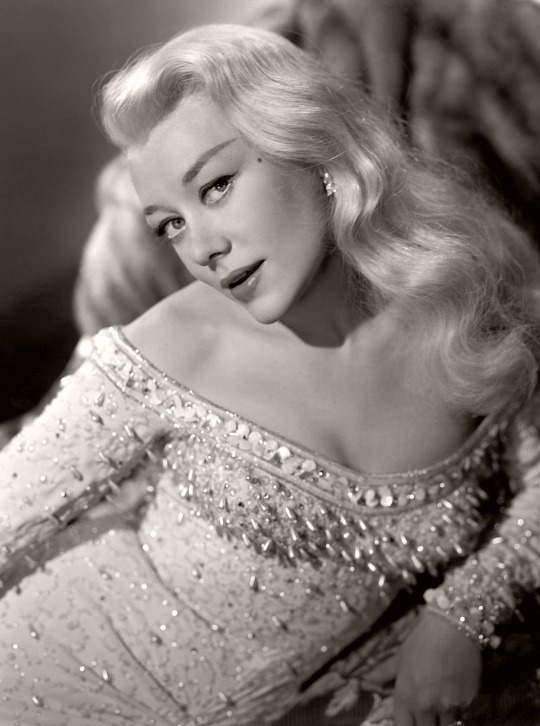
"Listen, listen. I was raised on Mary Poppins and "Votes for women! (step in time)" single-handedly taught me how to be a feminist. Also The Court Jester is one of my favourite movies of all time and she is UNBELIEVABLY gorgeous, charismatic, funny, and clever in it. She knocks several men out. Absolute icon."
"Like Bette Davis she has eyes to die for. Unlike Bette Davis you felt comforted by them, even when she was batting her eyelashes at you. Would glady go to Downing Street with her and throw things at the Prime minister"
"She had this wonderful wit and charm to her no matter the role and the most distinctive, striking voice!"

"She was amazing in Mary Poppins (the Suffragette song is severely underrated) and apparently she was Welsh? National pride! And she advocated for arts funding in Wales, which is very cool. Also, she died recently (RIP) making her one of the last survivors of the Golden Age of Hollywood, according to Wikipedia. Also also, she just has a cheeky energy I like? And her eyes are beautiful!"
"I mean, incredibly beautiful and talented, can do drama can do comedy. And she was a mermaid."

"I love Glynis Johns. Most of the reason is The Court Jester where she's a sensible and capable foil to whatever what going on with Danny Kaye at the time. She was also the first star I based an OC on. An OC that I still have to this day! Anyway here have some YouTube links love u bye"
Mermaid clip: https://www.youtube.com/shorts/1jUEA03mYTk
Court Jester (sharing a bed trope): https://www.youtube.com/watch?v=5d_qG9i054U
Court Jester (seducing the king): https://www.youtube.com/watch?v=C-GuqFYElKg
"VOTES FOR WOMEN! Well, votes for this woman. Please."
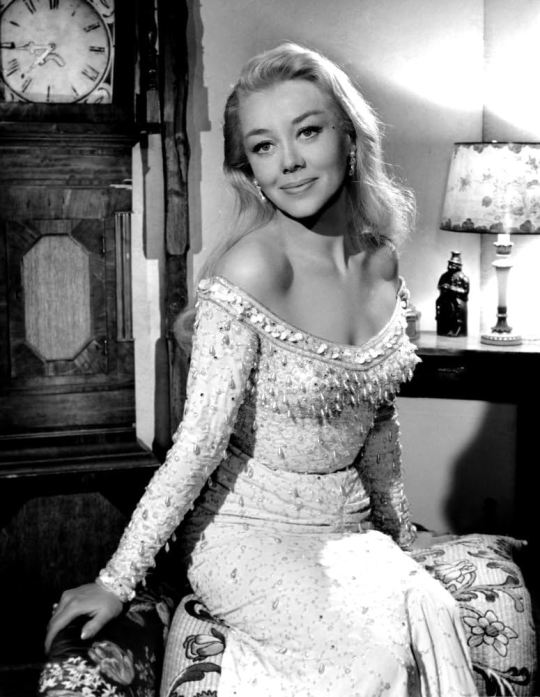
Hermione Baddeley propaganda:
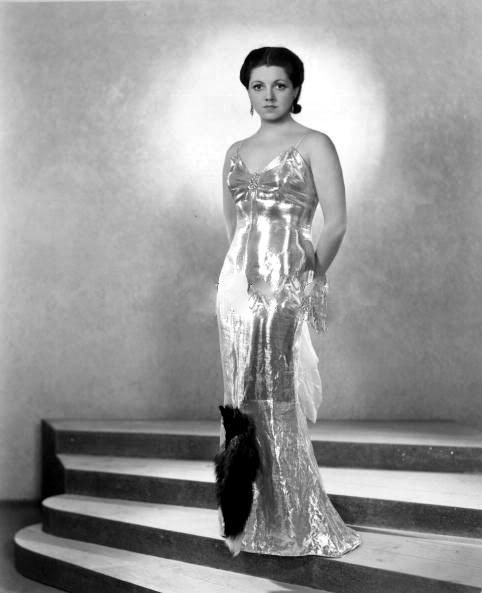

Propaganda for both Hermione and Glynis:
youtube
250 notes
·
View notes
Text
It's been announced that DuoLingo will stop updating Welsh courses. They've always championed endangered languages in the past but articles say they want to focus more on popular languages like Spanish and French. The following is a link to a petition to get the First Minister of Wales to work with the DuoLingo CEO and get them to save the course.
As someone who is learning Welsh, it's devastating news. Yes, there is still Say Something in Welsh and other methods, but DuoLingo is also extremely helpfull, especially for anyone who may not be able to afford all of the later courses in SSIW.
So please, signage would be most appreciated.
EDIT: Please don't think you have to live in Wales to sign this! I signed and I live in Australia. Share this with your language-learning friends around the world!
#DuoLingo#Welsh#Petition to save Welsh course in DuoLingo#I thought DuoLingo was supposed to champion dying languages#cymraeg#Dysgu#dysgu Cymraeg
560 notes
·
View notes
Note
So does Wales voting to ditch the Prince of Wales title automatically mean William ain't Prince of Wales anymore, or is there other BS they have to go through first to make England accept it?
Oh, god no, Wales has done no such thing. One of the councils of Wales, Gwynedd, has internally voted on it, basically to gauge opinion and also to make it official where they stand.
Okay, so, super quick and massively oversimplified political explanation: Wales is split into 22 counties, each of which has a council that does its day to day local governing, like when to put the recycling out and picking what colour to make the bins (recycling is a Big Deal in Wales and we are third in the world for doing it so this is a Very Important part of the job and we're Very Proud.) These councils are separate from electoral constituencies, though. Those are almost the same as the ones used for UK general elections, where we would vote for MPs to represent us in Westminster. However, there are more for Welsh elections, and in those we vote for MSs - Members of the Senedd.
The Senedd is the Welsh Parliament. That's where the laws are made in our devolved areas, aka the stuff Westminster is not allowed to decide for us, like education and cheese and recycling. That, if anywhere, is the place where we'd need politicians to demand an end to the Prince of Wales title if they were going to have a chance, because that's where the First Minister is, and he's like... the leader of Wales. Biggest Dog. The one who told the BBC right to their faces that Wales would base its pandemic response on science rather than creating a smokescreen to cover up our personal birthday party scandals. Mark Drakeford, an underwhelming but competent politician who is reportedly very good about packing his shopping away using the packing shelf in Aldi so he doesn't hold people up; which in Welsh people's books makes him Tidy.
Also, as councils go - as regions of Wales go - Gwynedd is the Most Welsh. The Welshest bit. Wales cubed. Uberwales. The land that England forgot. Come to Cymru. I Welsh, you Welsh, he/she/it Welsh. Very Welsh. Much Welsh. So Wales.
This did not require a vote, is what I'm saying.
So, what's actually happened here is that a local government of a single easily won council have agreed that William shouldn't be Prince of Wales in their opinion, and that's their official position. In terms of meaningful impact it's roughly equivalent to a custard pie dropped off a four foot ladder, except the pie was dragon shaped and sang 'O Gymru' as it fell.
HOWEVER.
It IS notable for being an official governmental body that has had the balls to OFFICIALLY tell the monarchy to do one, just as everyone is being very monarchial and shrieking 'Traitor!' at anyone not tearing their hair and beating their breast at the Queen's demise. And as long as it is an official, voted-on position, it opens up some possibilities both for other councils around the country and for the Senedd. If other councils start doing the same thing... it applies pressure. It's all about awareness. It helps grease the wheels of the actual petitions on the subject that are currently gathering signatures.
It helps establish a mandate, basically.
I suspect the next to vote will be either Anglesey, which copies Gwynedd a lot, or Monmouthshire, which will deliberately vote the other way, because their councillors are English. Alternatively nothing at all will happen. But we'll see!
2K notes
·
View notes
Note
What do you think of the idea of English regional devolution? (i.e. Yorkshire, West Midlands, etc. getting autonomous assemblies and First Ministers similarly to Scotland, Wales or N.I)
It is absolutely desperately needed, England needs more regional devolution. Although I think it’s more likely they’d be regional assemblies rather than having the same autonomy as the Scottish or Welsh governments.
86 notes
·
View notes
Text
Oh so it's true. J-C is on loan at Kensington palace.
This from Hardman's book:
“Whereas his father operates his private office along the same lines as that of the late Queen – with a private secretary delegating downwards – the Prince and Princess of Wales have been “developing a more lateral command structure at their Kensington Palace headquarters. ‘The idea is to engender greater collective responsibility, strengthen the structure and avoid a single point of failure,’ says one of the team. Previously, the Prince’s right-hand man had been his private secretary, most recently Jean-Christophe Gray. A high-flying civil servant, Gray had previously worked for three chancellors of the Exchequer and a prime minister (David Cameron). He had arrived on loan from Whitehall to replace another civil servant, Simon Case. The fact that Case was leaving Kensington Palace to go back to the top job in the entire civil service, that of Cabinet secretary, was indicative of the importance which the government attaches to the work of the heir to the throne. One of Gray’s last tasks, before returning to the civil service himself in 2024, would be to split his job in two. The Prince and Princess of Wales would, henceforth, have both a ‘chief executive’, managing the whole show, alongside a private secretary covering the more constitutional side of things. These two would become part of the same ‘leadership team’, which would also include an assistant private secretary with specific responsibility for foreign affairs, in this case a former ambassador to Lithuania, David Hunt. It is seen as a priority to have another Welsh-speaking assistant private secretary who can handle Welsh interests.
The Waleses have additionally created the role of ‘chief operating officer’ (with a financial and human resources role). External recruitment consultants were summoned to ensure that the search for these vacant posts extended beyond the usual trawl of the armed forces and Whitehall. As Valentine Low has written, Prince William only hired an earlier press secretary after first checking that the applicant had not been educated at a top public school but, rather, at a comprehensive.The Kensington Palace team, at the time of writing, also includes the acting private secretary to the Princess of Wales, Natalie Barrows, a ‘KP’ staffer for many years, and the ‘Head of the Private Household’, Lieutenant Commander James Benbow. The former Royal Navy helicopter pilot and equerry occupies a chief of staff/Master of the Household role, running life beyond the public gaze for both the Waleses and their children.
24 notes
·
View notes
Text
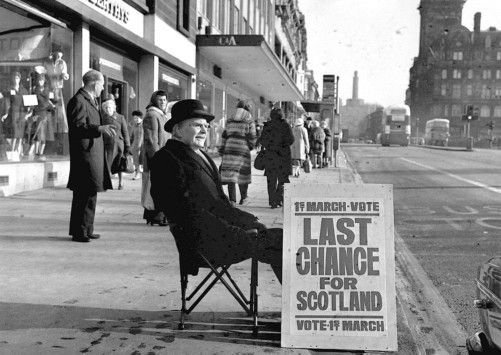


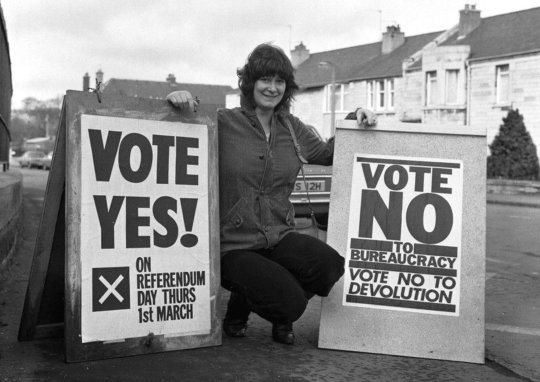




On March 1st 1979 Scots voted in favour of Devolution, but failed to reach the required 40% of the population in favour of implementing it - due to 36% of the electorate not voting.
THE PLOT.
The introduction of devolution legislation in 1976 was largely the product of nationalist pressures on the Government. James Callaghan's Labour government had a majority of only three after the 1974 (October) election and by 1977 had no majority at all after a series of by-election defeats. The government was therefore vulnerable to pressures from the Scottish National Party and Plaid Cymru, who between them won 14 seats at the election (SNP 11, Plaid Cymru 3). The Kilbrandon commission had reported in 1974, recommending the establishment of a Scottish parliament and endorsing the principle of devolution.
A combined Scotland and Wales Bill was introduced in November 1976. It gained a second reading only after referendums in both Scotland and Wales had been conceded. The Shadow Secretary of State for Scotland, Alick Buchanan-Smith, and one of his front benchers, Malcolm Rifkind, resigned their posts when the Shadow Cabinet decided to oppose its second reading. On the first day of committee 350 amendments were put down. Michael Foot, (then Lord President and Cabinet Minister responsible for the devolution bill) was reluctant to impose a guillotine. After nearly 100 hours of debate only three and a half clauses of the bill had been considered. A guillotine motion was tabled but defeated in February 1977. The Bill was withdrawn.
In November 1977 separate Bills for Scotland and Wales were introduced, with support from the Liberals. This reduced opposition from those who had previously opposed the combined Bill on the grounds that the Welsh did not really want devolution. This time the guillotine motion was won.
As the committee stage was nearing its end, it scrutinised an amendment from Labour backbencher George Cunningham. It required the Secretary of State to lay before Parliament an order repealing the Act unless at least 40% of the eligible electorate voted "yes". The amendment was strongly opposed by the Government, but they lost the vote by 166 votes to 151.
In the referendum, on 1st March 1979, Scotland voted in favour of devolution by 52% to 48% - but only 32.9% of the electorate had joined the majority. In Wales the vote was against devolution, by 80% to 20%. The Acts were repealed the next month.
The Government was not helped by the extent of internal dissent within the Labour party. There was an active Labour 'Vote No' campaign in Scotland, of which Brian Wilson was Chairman, and Robin Cook a Vice-Chairman together with Tam Dalyell.
In Wales, Neil Kinnock was among those who campaigned for a "no" vote. During the last few days of the campaign in Wales, the pro-devolution Labour party -TUC group argued that a "No" vote would be a vote for the Tories, and a vote against the Government. This was a gamble that did not pay off; the scale of the "No" victory meant that those who had campaigned against the government could feel vindicated.
A motion of no confidence in the government was tabled by the Conservatives and supported by the SNP, the Liberals and eight Ulster Unionists. This motion was carried by one vote on 28th March 1979. The next day Callaghan announced that Parliament would be dissolved.
The 1979 Results:
Scotland: Question: Do you want the provisions of the Scotland Act 1978 to be put into effect ?
Yes 1,230,937 (51.6%)
No 1,153, 502 (48.4%)
Rejected ballot papers 3,133
Electorate 3, 747,112
Turnout 63.6%
But, we Scots are known the world over for this saying. Try, try and try again we did and won our parliament. We did and we put the party in powder who would take us to freedom. We will never give up our fight to be an Independent country once more.
19 notes
·
View notes
Text
The Man with the Watches
Originally written in 1898 as part of a series of short stories called Round the Fire. Doyle needed money to complete a house he was building in Surrey. Insert your own jokes about actors, bad movies and extensions here.
Rugby is a town in Warwickshire, 83 miles north of London. Yes, it is where the sport of rugby is named after - more specifically Rugby School, a famous private school.
Smoking areas in British trains were gradually abolished from the 1980s, the final ones going in 2005 (GNER and Caledonian Sleeper). I have a 2000 GB-wide timetable showing where smoking was still permitted. In some cases, the trigger for the ban was the move to air-conditioned stock that would result in the smoke circulating in the rest of the train.
A Gladstone bag was a rigid-framed small suitcase that could be opened into two equal halves, named as such due to its used by William Gladstone, four-time British Prime Minister, who would start his final ministry later in 1892.
The guard's van on passenger trains was generally a specific section of a carriage that also had a caged area for carrying luggage, parcels and caged small animals.
Willesden Junction is located in Harlesden, NW London. It no longer has any platforms on the West Coast Main Line, with Avanti and London Northwestern Railway trains going straight past it. Its passenger service today is made up of London Overground Lioness line services from Euston to Watford Junction, Overground Mildmay line services from Stratford to Richmond or Clapham Junction and the Underground's Bakerloo Line from Harrow and Wealdstone to Elephant & Castle. The first and third share the same tracks, while the second operates, on lines shared with freight trains, on separate "High Level" platforms. There is a depot for Overground trains nearby.
Non-gangwayed stock i.e. carriages with no connection between them even for emergency use, continued to be built into the British Railways, with quite a few of the "first generation" of diesel and electric multiple units being built this way. Most got gangways in later refurbishments, but the Class 205 DEMU, bar one example (205205) altered in a refurbishment trial, would carry on without them until final withdrawal in 2004. Most of the survivors then promptly ended up in the hands of heritage railways.
The Bible Society of London was founded in 1804 with the aim of providing affordable Bibles in people's own languages, after the 1800 case of a woman called Mary Jones, who saved up for six years then walked 26 miles to buy a Bible in Welsh. It is still active today.
The London to Rugby line had been widened to four tracks in the 1870s. From west to east, the tracks go: Down (Northbound) Fast - Up (Southbound) Fast - Down Slow - Up Slow. Ergo, you cannot move between two Down trains without a big leap. (https://www.opentraintimes.com/maps/signalling/lec2#LINK_1)
A bunco-steerer is a swindler.
Green goodsmen operated a scam in which people were offered purportedly counterfeit notes printed using stolen plates (so appearing genuine) at a cheap price, being shown actually genuine notes in a bag. During negotiation, the bag was switched for one containing worthless goods, like sawdust or green paper. Having been duped out of real money, the victims were reluctant to report this to police as attempting to purchase fake money was illegal.
Card-sharping is cheating at cards using various means, including cutting bits of cards to mark the ones you would want. Vegas casinos frequently deliberately cut corners off used cards being sold to tourists to prevent them being snuck into their games.
Tammany refers to Tammany Hall, the corrupt political machine that had ran New York City, for much of the 19th century, leveraging support from Irish immigrants by providing them with jobs for example. It had been temporarily ousted from power after the Lexow Commission of 1894-95 into police corruption; to wit, promotions were being sold for large sums of money and officers got that through extracting protection money from brothels etc. However, it would come back in the 1898 elections and retain control with occasional breaks until 1961, when Carmine DeSapio was ousted as its leader. It then lost power and had gone by 1967.
Travelling salespeople would carry samples or models of their products on their trips, sometimes in branded containers. This has largely become a thing of the past, but is still around.
Northumberland Avenue used to have a lot of high-class hotels, but these have mostly gone. Some were taken over for government use for a while, including by the War Office.
"Mary Jane" appears to have been a slang term for a male prostitute; Mary Jane Kelly was the final victim of Jack the Ripper.
#letters from watson#the man with the watches#arthur conan doyle#not sherlock holmes#allegedlyhist#history#factoids
16 notes
·
View notes
Text
ROUND THREE
Our second pair to tie last round! Let's see who wins this time


Melina Merkouri was a Greek actress, singer, activist, and politician. She received an Academy Award nomination and won a Cannes Film Festival Best Actress Award. She was also nominated for one Tony Award, three Golden Globes and two BAFTA Awards. In October 1981, Mercouri became the first female Minister of Culture and Sports.
Maybe is a Welsh-Greek singer and songwriter, previously known as Marina and the Diamonds. She has had several successful albums.
40 notes
·
View notes
Note
[Tbf, Charles and BP does this too, I just think they might be a little bit less obvious about it lol. One thing that bothers me the most about KP’s approach is how they’re very keen on telling us stuff instead of showing it. So they say William is a “great statesman” which he is, but then they don’t show it properly.]
I disagree completely. KC3 is rightly called a great statesman, not by his spokesman but by others and that’s how it makes it way into the media. He’s put in the work over decades, at home and in the Commonwealth. There’s a reason so many firsts were extended to him on his Germany state visit - from the ceremonial welcome to addressing the Bundestag in session.
It’s a function of relationships that he’s built, often with little coverage or appreciation. Today would have been his and Camilla’s wedding anniversary but he rescheduled it to attend the Pope’s funeral, because it was such an important diplomatic event. Like Arthur Edwards who follows the Royals says: he knows everybody in the world, every Prime Minister, every Head of State.
William has a very long way to go to become even close to a great statesman - his meeting with Jamaica’s PM and the ill advised damage control speech on the Caribbean tour - show that. If he’s intending to be the future Head of the Commonwealth, why have him and Catherine never visited Africa? Why didn’t his wife attend the Commonwealth Day reception? How many Commonwealth countries have they visited?
Why doesn’t William speak Welsh yet, or comfortably any other language that we know of? What big domestic initiative does William has that sees him engaging with political leadership at home to build relationships? It’s like he’s woken up and realized at 40 he’s far behind on diplomatic credibility and having Lee give briefings to People mag to call him a “global statesperson” will make him one. It won’t - he has to put in the work. 3 week holidays every two months don’t help 🤷🏻♀️
i have nothing to add to this except please drop your mic
64 notes
·
View notes
Photo

Det sted man er fra er alltid pent, det er fedrelandsfølelsen i det små, hjemmefølelsen.*
- Knut Hamsun
*The place you're from is always beautiful, it's the sense of country in a small way, the feeling of home.
Most of us have heard of Lapland, but we’re not supposed to call it that anymore. The correct term these days is Sápmi - i.e. the land inhabited by the Lapps (or, rather, the Sami - as they very much prefer to be known). And, fair enough: they’ve got every right to assert their own identity, especially after centuries of domination by their southern neighbours.
Some of those neighbours are now keen to make amends for past injustices. For instance, the Swedish government made a point of using its presidency of the EU Council of Ministers to celebrate Sami National Day.
I can only imagine that it was worded with the best intentions, but if you read any of the Scandinavian press and media, it’s clear that it hasn’t gone down well with everyone. The problematic claim is that the Sami are “the EU’s only indigenous people” (my italics).

For a start, what is meant here by ‘indigenous’? According to most dictionaries, it’s the property of being original to, or characteristic of, a particular part of the world. In which case, there are all sorts of European peoples who could claim to be indigenous to Europe. For instance, the geneticist Razib Khan points out that the ancestors of today’s majority-Swedish population have been in Scandinavia for at least as long as the ancestors of today’s Sami.
The Norwegians and Swedes originated from the Norse people. The Norse people in turn originated from the Proto-Germanic peoples who migrated to the area of northern Germany, Denmark, southern Scandinavia. The Proto-Germanic peoples in turn originated from the Proto-Indo-European people whose homeland lies in the Pontic-Caspian steppe, the area around Ukraine and southern Russia.
Likewise, the Sami are not quite indigenous to the area either. The Sami originated from the Proto-Uralic people, whose homeland was around the Ural mountains (and was therefore close to the Proto-Indo-Europeans and resulted in interactions between their protolanguages, resulting in lexical borrowings). The Proto-Uralic peoples, just like the Proto-Indo-Europeans, slowly expanded and migrated, but in their case they expanded to the northwest and the northeast (with the notable exception of the Hungarians who ended up in Hungary). The Proto-Samic people, a subgroup of the Proto-Uralic peoples that gave rise to the modern Sami, were said to have displaced or merged with a much earlier indigenous Paleo-European group that was already in northern Scandinavia. This is evidenced by substrate words present in the Sami languages that derive neither from Proto-Uralic nor from Proto-Indo-European.

In any case, if Europeans are going to have a competition as to who was in Europe first, then it might be won by those with the most Neanderthal ancestry - because, as genomic testing has revealed, millions of us carry Neanderthal genes.
But perhaps the Swedish government is using indigenous to mean something more specific. According to Merriam-Webster the word relates to “the earliest known inhabitants of a place and especially of a place that was colonised by a now-dominant group”. This extra element of oppression by outsiders sharpens up the definition. However, while it applies to the Sami people and their history, it doesn’t do so uniquely. There are many ethnic groups in Europe that have been around for ages and which have been maltreated by foreign overlords. Just ask the Welsh, for instance, or the Basques.
It could be argued that the Sami are in a special category because of where they live (i.e. the most northerly reaches of Europe) and how they lived there (e.g. by reindeer herding). To have maintained a traditional culture for so long into the modern era surely sets them apart. But, again, this is debatable. While there’s no doubting the distinctiveness of the Sami, other Europeans can also lay claim to ancient traditions that have survived against the odds. To take a topical example, the Ukrainians are literally sacrificing their lives for a distinctive culture, language and history that Putin wants to erase.

Progressives ought to think twice before making an issue about who is and isn’t indigenous in Europe. While the label might play into the victim/oppressor narratives of the woke Left, it can also be exploited by the far-Right.
At a time when populism is a constant threat, telling people that they’re not indigenous to a place where they and their ancestors have lived for “time immemorial” is less than helpful. I’m sure that the Swedish government meant well, but it’s pulling on a dangerous thread.
When language is allowed to become dissociated from meaning or the map from the territory, then fractional strife and chaos awaits. Orwell understood it perfectly from his observations of Stalinists: control language and you control expression; control expression, you control dialogue, and eventually the political narrative.
#hamsun#knut hamsun#quote#norsk#norwegian#scandinava#sweden#sami#indigenous#identity#society#traditions#culture#europe#home
71 notes
·
View notes
Text

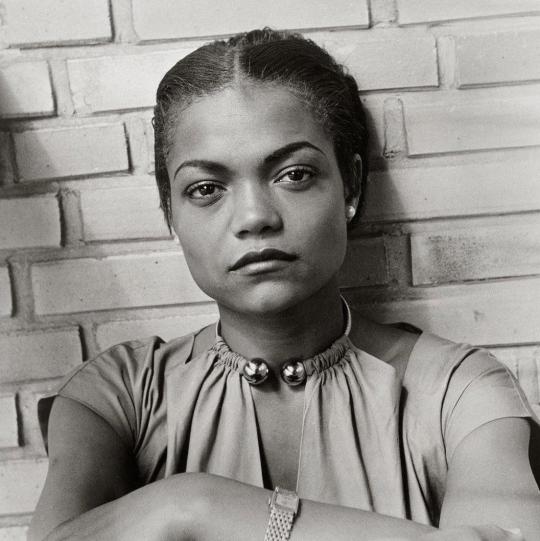
Propaganda
Glynis Johns (Mary Poppins, The Court Jester)—LISTEN, I'd let that woman's voice with all its gravely hoarseness (positive) wash over me all goddamn day, but if that's not enough she managed to play the straight woman to Danny Kaye's jester, all with her cleavage so plunging it might as well have been catapulted into the ocean right after Basil Rathbone
Eartha Kitt (Anna Lucasta, St. Louis Blues)—My friend and I have a saying: NOBODY is Eartha Kitt. A thousand have tried, and they've all come up empty and will continue to do so. Everyone knows her for something: from "Santa Baby" to Yzma in Emperor's New Groove to Catwoman to making Lady Bird Johnson cry for the Vietnam War. She was a master of comedy and sex, an extremely vocal activist, and she aged like fine wine... I honestly don't know what I can say about her that hasn't already been said, so I'll stick to linking all my propaganda. Like what else do you want from me. She was iconic at everything she ever did. Literally name another. How can anyone even think of her and not want to absolutely drown?
This is round 4 of the tournament. All other polls in this bracket can be found here. Please reblog with further support of your beloved hot sexy vintage woman.
[additional propaganda submitted under the cut.]
Glynis Johns:

She walks the line between sexy and cute. Her best role for me is in "The Court Jester as Maid Jean. She's fantastic as the soft but tough captain of the outlaw band and she looks stunning in every gown she wears throughout the film. And of course we can't forget her iconic turn as the suffragette mother, Mrs. Banks, in Mary Poppins! Also shoutout to her distinctive and beautiful voice, kind of smoky and husky. Extremely hot and set her apart from many of her peers."

"She was amazing in Mary Poppins (the Suffragette song is severely underrated) and apparently she was Welsh? National pride! And she advocated for arts funding in Wales, which is very cool. Also, she died recently (RIP) making her one of the last survivors of the Golden Age of Hollywood, according to Wikipedia. Also also, she just has a cheeky energy I like? And her eyes are beautiful!"
"She had this wonderful wit and charm to her no matter the role and the most distinctive, striking voice!"

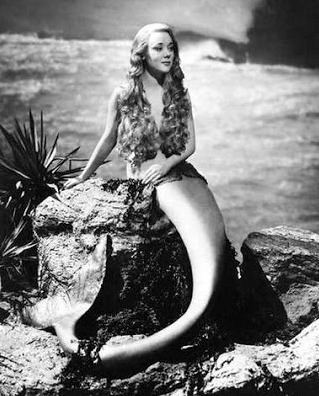
"I mean, incredibly beautiful and talented, can do drama can do comedy. And she was a mermaid."
"Like Bette Davis she has eyes to die for. Unlike Bette Davis you felt comforted by them, even when she was batting her eyelashes at you. Would glady go to Downing Street with her and throw things at the Prime minister"
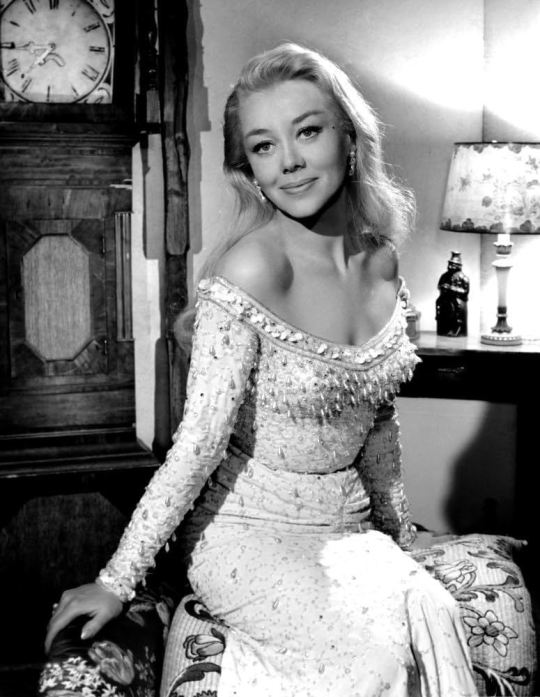
"Listen, listen. I was raised on Mary Poppins and "Votes for women! (step in time)" single-handedly taught me how to be a feminist. Also The Court Jester is one of my favourite movies of all time and she is UNBELIEVABLY gorgeous, charismatic, funny, and clever in it. She knocks several men out. Absolute icon."
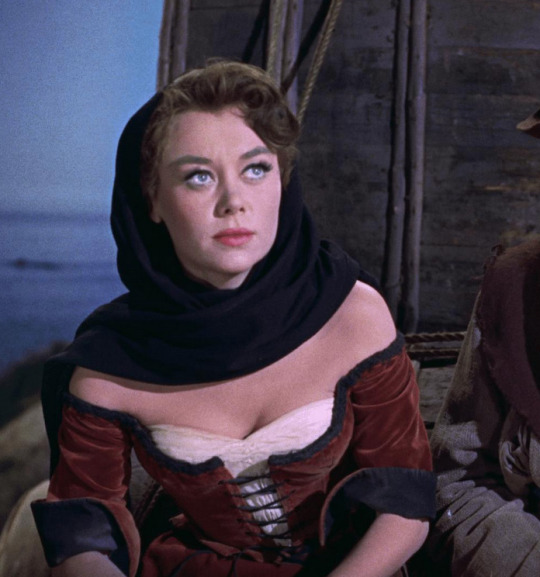
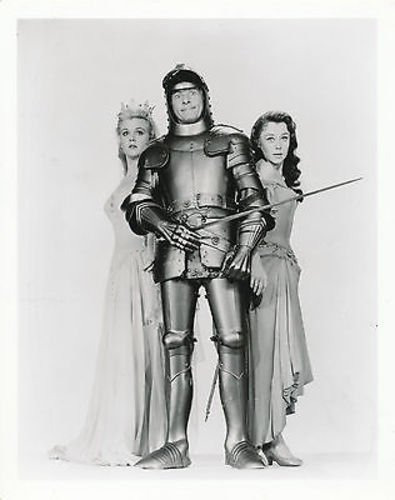
"I love Glynis Johns. Most of the reason is The Court Jester where she's a sensible and capable foil to whatever what going on with Danny Kaye at the time. She was also the first star I based an OC on. An OC that I still have to this day! Anyway here have some YouTube links love u bye"
Mermaid clip:
Court Jester (sharing a bed trope):
youtube
Court Jester (seducing the king):
youtube
"VOTES FOR WOMEN! Well, votes for this woman. Please."
youtube
Eartha Kitt:

"A hot vintage woman who was not just known for her voice, beauty, poise, and presence, but also her unapologetic ways of speaking about how she was mistreated in the show business as a girl who grew up on cotton fields in South Carolina in the 1930s through the 1940s coming to Broadway first and then Hollywood."
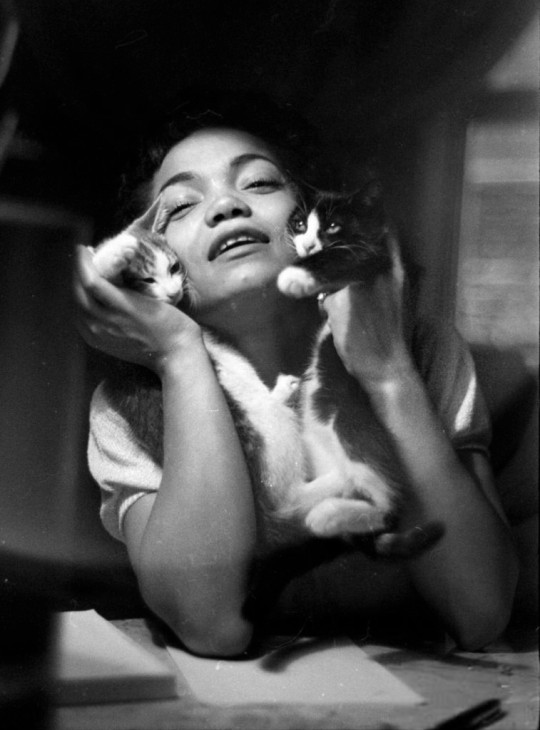
"Have you watched her sing?? Have you seen her face?? Have you heard her talk?? How could you not fall instantly in love. She makes me incoherent with how hot she is."

"She can ACT she can SING she can speak FOUR LANGUAGES she is a GODDESS!!! Although she is (rightfully) remembered for her singing, TV appearances (Catwoman my beloved), and later film roles, her early appearances in film are no less impressive or noteworthy!! She’s an amazing actress with so much charisma in every role. She was also blacklisted from Hollywood for 10 years for criticizing the Johnson administration/Vietnam War, so. Iconic. Also Orson Welles apparently called her “the most exciting woman in the world.”




"She had such a stunning, remarkable appearance, like she could tear you to shreds with just a glance- but the most undeniable part of her hotness was her voice, and it makes sense that it's what most people nowadays know her for. Nothing encapsulates the sheer magnetism of her singing better than this clip of her and Nat King Cole in St. Louis Blues, she pops in at 2:49. Also I know it's post-1970 but her song that was cut from Emperor's New Groove is likely to make you feel Feelings."
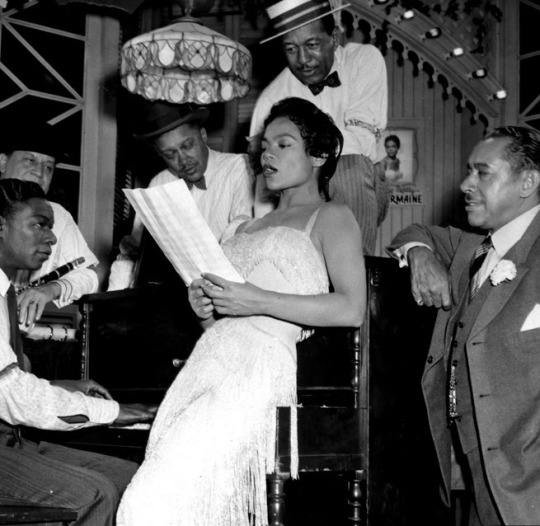
Even with as racist as Hollywood was in the 1950s and 60s, Eartha Kitt STILL managed to have a thriving career. She also once had a threesome with Paul Newman and James Dean, and called out LBJ over the Vietnam War so hard that it made First Lady Johnson cry. Eartha Kitt was talented, sexy, and a total badass activist.

252 notes
·
View notes
Text
Operation Nestled Dragon
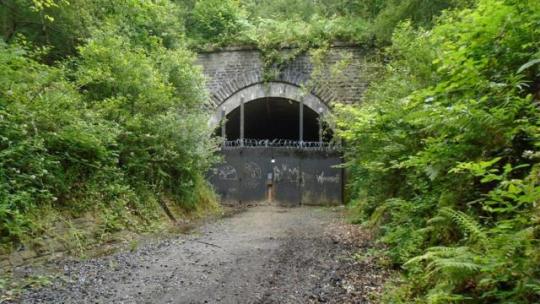
Even before the passage of its iconic Transport Act 1947, the first Attlee ministry had been laying the groundwork for what we would today call a strategic steam reserve. Operation Nestled Dragon, which went into effect as early as December 1945, called for “at least 4,000” steam locomotives to be stored and kept in constant readiness in the event of “any cataclysm which could strain supply.” This was a somewhat arbitrary number; the LMS alone had 8,000 locomotives on the eve of Nationalization. It was believed that a majority of the country’s engines would survive attack during a wartime scenario, the most likely reason to activate the reserve at the time. 4,000 engines kept as a backup to unscathed stock was deemed sufficient. (It has to be said there were no strategic reserves of coaches or trucks, whether planned or even merely discussed!)
These engines and the necessary facilities would be dispersed as needed throughout the country. Bigger towns would have more engines and more MPDs (motive power depots) allocated to them, London having the most. The number of engines kept in a single “strategic MPD” was always limited to 20. In this way, an attack such as an aerial bombardment would be less likely to take out a population center’s entire locomotive stud at once.
To “activate” the reserve, the Minister of Transport was required to approach the Prime Minister and his Cabinet, and a vote be held on the matter.
Strategic MPDs could be crude or elaborate. By design they were severed from the nearest railway, so that no tracks were visible for any overcurious trespasser, potential spies or reconnaissance aircraft to follow. Every MPD had to be able to have these missing rails laid back in “within or under three hours” if called upon. Often, abandoned mines and tunnels were used and their insides fitted out. These ‘naturally-occurring’ locations were codenamed “dragon’s lairs.” Other times a location had to be built from scratch; these artificial MPDs were codenamed “rabbitholes.” Always was there emphasis on keeping the MPDs dry, ventilated and fireproof. Each MPD needed a turntable, a reliable water supply, coal bunkers, storage space for rails, sleepers, a small number of spare parts, adequate headroom and an overhead crane for heavy repairs like boiler swaps, and of course bunks for crews should the reserve be activated and they be based there. Otherwise bunkrooms were vacant, although men on duty for maintenance of stock and depots did find use for them during their shifts.
There was little methodology in place for which engine classes were preferred for the reserve. Great Western engines were less favored as they were built to run on high-quality South Welsh coal, and it was assumed the quality of coal sourced during a crisis would be poor. In any event however, some still “found their way in.” In general however, Eastern, Midland and ex-WD locos formed the majority of the workforce. Every engine belonging to the various military railways such as that at Longmoor were considered part of the reserve too, so it could be said that several pieces of the reserve’s stock were out in the open all along. Also joining their ranks as they came about were BR Standard classes, some built specifically for the reserve. These had neither BR nor serial numbers, being built “off the books.”
At first, engines reserved were simply stored and maintained in the livery they wore at the time of their “reassignment.” As time went on, (and their maintainers became bored,) a semi-official livery of black with white and navy blue stripes was settled upon and applied, one engine at a time. Quickly a crest for the Strategic Reserve was designed by one anonymous artistic crewman, and the reserve’s motto agreed: “Rabbit, rabbit, rabbit,” a superstitious British phrase.
Attlee and Churchill were both said to have toured a strategic MPD at least once. “Here we are in the belly of the beast. You lot have done some splendid work; Britain thanks you,” Attlee had said on his visit. “Men will do anything to play trains away from the wife without interrogation,” Churchill remarked on his, perhaps half in jest.
Thus was the system. As steam on the public or “civilian” British Railways was phased out, further freshly withdrawn engines were added to the reserve stocklist. Much speculation was made as to why coal bunkers and hoppers and water towers continued to be maintained even as the steam engines finally vanished from the national network in August 1968. This was explained away as infrastructure left in place for railtours by preserved engines, and in hindsight must have sounded ridiculous.
As generations of enginemen retired, they had to pass on their skills to the fresh blood. The years then went by without significant cause for alarm. The closest the reserve came to being activated was at the height of the Cuban Missile Crisis in late October 1962; declassified materials confirm that as many as half of the reserve was in full steam awaiting the call, and track gangs were ready and waiting to lay in rails. The crisis ebbed of course, and by the second week of November, the number of engines idle was back to “Normal.”
Margaret Thatcher’s Government planned to shut the program down, but this was averted… just. John Major however couldn’t be dissuaded. Privatization was in full swing, and the Soviet Union had dissolved itself. The reserve suddenly seemed very redundant, (but per its own 1945 definition, not completely,) and the winding down of it all began. On the 1st of December 1998, some 53 years after the beginning of Operation Nestled Dragon, all 4,855 locomotives and their associated depots and crews were demobilized by the Blair ministry and most of the reserve’s documentation declassified. Everything became public knowledge, including the engines themselves, quite literally overnight.
At once, the locos and their facilities were up for auction. Dozens of Strategic MPDs were made into living museums demonstrating how the reserve worked. Many of the engines belonged to classes otherwise thought extinct, such as the LNER Thompson L1s and the LMS Garratts, and here were surviving specimens being pulled out of the metaphorical wardrobe like nothing. The British preservation scene was in a matter of hours awash in perfectly functional engines no one expected to still exist, which coupled together in a line were longer than most if not all of the railways themselves! Several also were sold abroad to the United States and Canada.
The public couldn’t be blamed for this all being such a shock. They hadn’t been prepared.
Their predecessors however certainly were.
#houseboat’s writing#alternate railway history#arh: operation nestled dragon#fictional real life railways#fictional real life engines
10 notes
·
View notes
Text
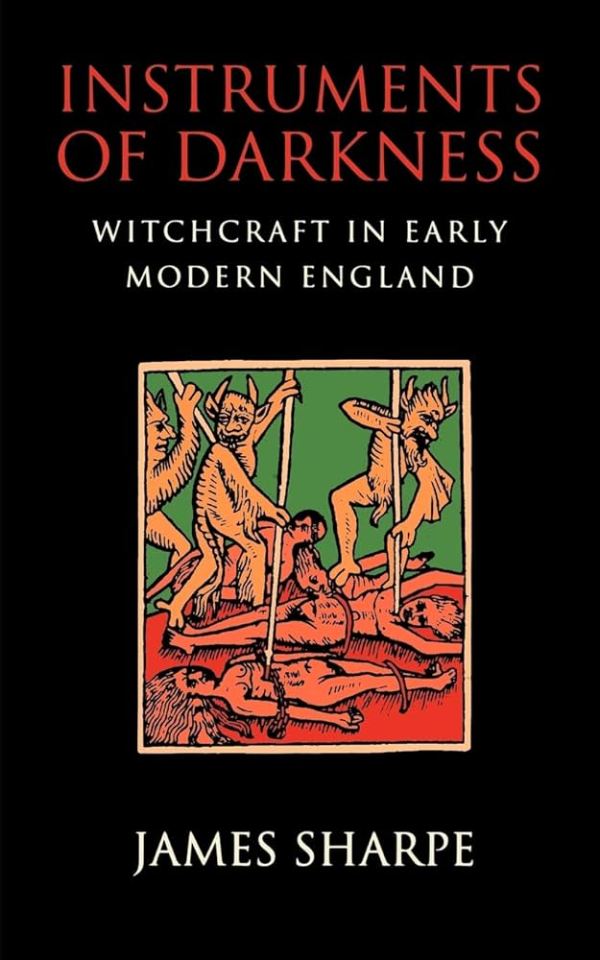

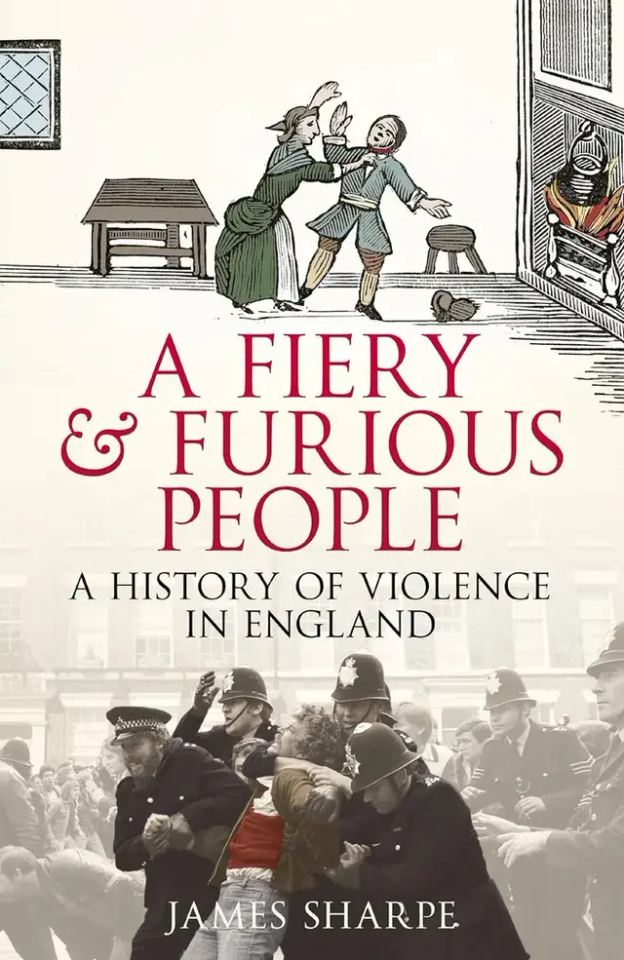

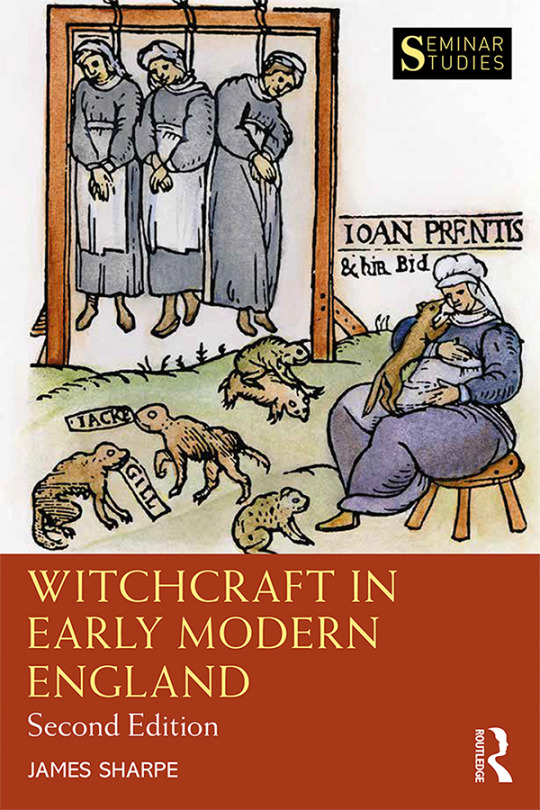
In the mid-1990s the historian James Sharpe, who has died aged 77, wrote Instruments of Darkness, a book on witch-hunting in England that reopened a field of research that had been in the doldrums for a generation after the Welsh historian Keith Thomas’s brilliant Religion and the Decline of Magic (1971). Published in 1996, Jim’s book helped to make the study of British witchcraft what it is today: one of the most lively areas of historical writing.
Earlier historians had argued that whereas witch-hunting on the European continent was fantastical, dominated by beliefs about the devil, English witch-hunting was comparatively rational and down-to-earth, centred on beliefs about the practical harm that witches caused to people and animals. Jim showed that this was nonsense, and that English witch-hunting was also powered by fear of the devil and followed much the same pattern as many other European countries.
An archival hound, Jim surveyed every possible paper-trail in the course of his research, uncovering valuable sources for those who have come after him, including via his copious footnotes and bibliographies. In addition, he went to many conferences on the continent and made it his business to meet the leading scholars of crime and witchcraft, always developing the European dimension of his work.
He loved the detail – he was fascinated, for instance, by the phenomenon of familiars in English witchcraft, creatures who suckled on witches and carried out their bidding, one of the few features that do indeed set English witch-beliefs apart from the continent. He noted them all: Bid the ferret, a lamb, another creature that was carefully kept in a basket with wool, and a white-spotted cat ominously named Sathan.
Perhaps his most appealing book is his history of Anne Gunter, published in 2000, about a 17th-century girl who claimed to be possessed but was unmasked as a fraud. It is a classic of its kind, a marvellous micro-study that reveals the inner world of an unhappy individual who found herself used for other people’s agendas and who, Jim argued, just wanted love and attention. The book, Bewitching of Anne Gunter, explores the mindsets of the doctors, ministers of religion and even the monarch himself, James I, who did not believe Anne’s stories.
As Jim was well aware, at another level it is also a story about fathers – and patriarchal figures of all kinds – who fail their children. It is a gripping read, with lots of humour, and along the way speculates on the origins of football. In the style of a 17th-century broadside Jim gave the book the wonderful sub-title, A Horrible and True Story of Deception, Witchcraft, Murder and the King of England – wording that led the Bavarian State Library in Munich to refuse twice to buy it, on the grounds that it simply could not be an academic book.
Jim followed up with Dick Turpin: the Myth of the English Highwayman (2004), another fantastic read, and then A Fiery and Furious People: a History of Violence in England (2016), which upturned the idea of the peaceable phlegmatic English character.
This was a return to earlier preoccupations, for Jim started out as a historian of crime. From 1983 on he wrote a series of path-breaking books on the history of crime in the British Isles in the 16th and 17th centuries, inspiring others to follow in his wake.
In a field dominated by Tudor and Stuart monarchs and their courts, Jim brought ordinary people into history, in all their variety, by showing just what could be done with court records of crime. These rich sources have revolutionised how we write history because they take us as close as we can to the voices of the lower classes in the past, and Jim was one of the first to realise this.
Jim was born in Lewisham, south-east London, to James, a labourer, and Margaret, a cleaner. At Colfe’s school, in Blackheath, he won a place at Oxford University, where he did a history degree and then a doctorate under Thomas’s supervision. He spent all his career, from 1973, as a history lecturer at the University of York, where he was a marvellous and generous teacher and rose to be professor before retirement in 2016.
York became the go-to place for social history, with the three Jims, Jim Walvin, Jim McMillan and Jim Sharpe, all doing exciting new work on slavery, women’s history and crime respectively. He adored teaching and had a wonderful line in dry humour; his students all knew how proud he was of them.
He is survived by his wife, Krista (nee Cowman), whom he married in 1993, and their children, Guy and Freddie.
🔔 James Anthony Sharpe, historian, born 9 October 1946; died 13 February 2024
Daily inspiration. Discover more photos at Just for Books…?
9 notes
·
View notes
Text

https://www.reuters.com/business/environment/iceland-lava-flows-slow-after-fourth-eruption-since-december-2024-03-17/
4 notes
·
View notes
Text
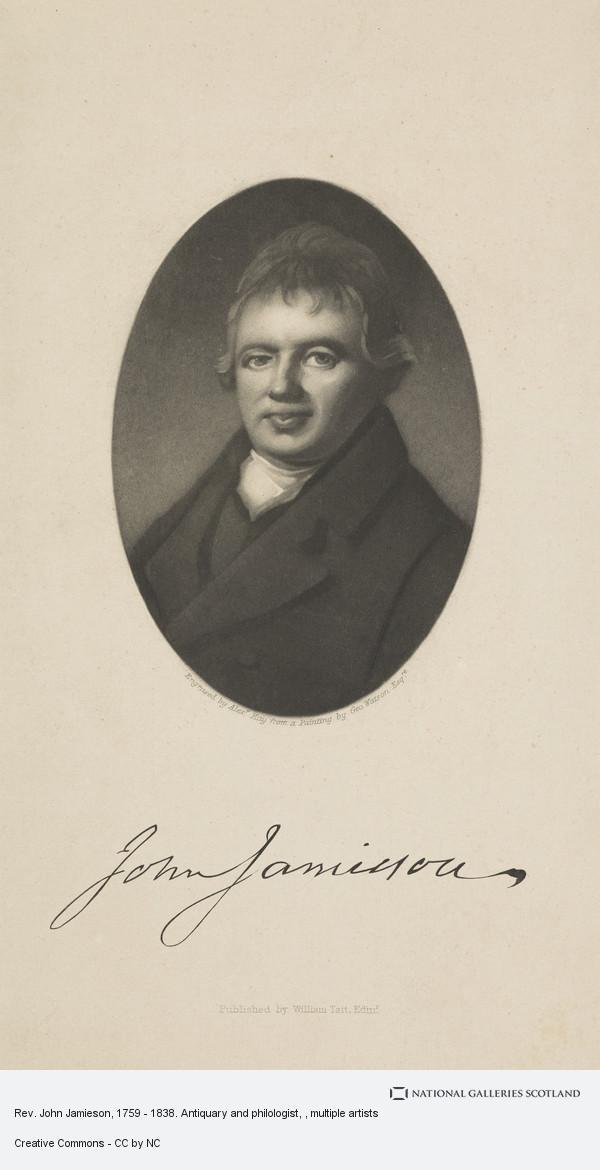

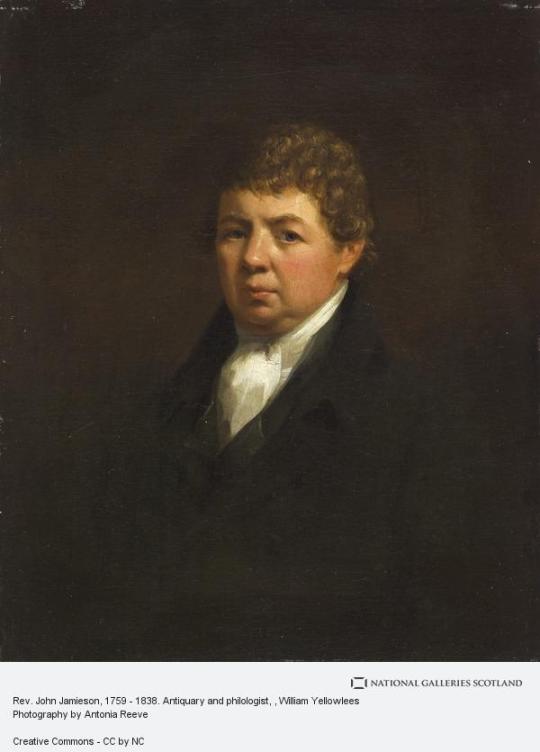
On March 5th 1759 the lexicographer and church minister John Jamieson was born in Glasgow.
I know most of you will not have heard of Jamieson, but his publication, Etymological Dictionary of the Scottish Language, is credited with keeping the language alive. He was a bit of a polymath though and learned in many fields.
The language I am talking about here is Scots, the Scot’s Tongue as it is often referred to, If you have read some of my posts I like to dig out documents etc from days gone by, a most of these are written in Scots, you only have to read the poetry of Robert Fergusson or Rabbie Burns, the vast majority which is written in the language, or up to modern times if you have read any of Irvine Welsh’s books, you will know that as a language it is distinctly different to what is termed as “proper English”
Anyway a bit about the man, Jamieson grew up in Glasgow as the only surviving son in a family with an invalid father, he entered Glasgow University aged at the staggeringly young age of just nine! From 1773 he studied the necessary course in theology with the Associate Presbytery of Glasgow, and in 1780 he was licensed to preach.
Jamieson was appointed to serve as minister to the newly established Secession congregation in Forfar, and stayed there for the next eighteen years, during which time he married Charlotte Watson, the daughter of a local widower, and started a family. Their marriage lasted fifty-five years and they had seventeen children, ten of whom reached adulthood, although only three outlived their father. He next became minister of the Edinburgh Nicolson Street congregation in 1797 where he guided the reconciliation of the Burgher and Anti-Burgher sects to a union in 1820.
In 1788 Jamieson’s writing was recognised by Princeton College, New Jersey where he received the degree of Doctor of Divinity. His other honours included membership of the Society of Scottish Antiquaries, of the Royal Physical Society of Edinburgh, of the American Antiquarian Society of Boston, United States, and of the Copenhagen Society of Northern Literature. He was also a royal associate of the first class of the Royal Society of Literature instituted by George IV.
Jamieson’s chief work, the Etymological Dictionary of the Scottish Language was published in two volumes in 1808 and was the standard reference work on the subject until the publication of the Scottish National Dictionary in 1931. He published several other works, but it is the dictionary he is best known for.
He had a particular passion for numismatics, and it was their mutual interest in coins which led to the first meeting between Jamieson and Walter Scott, in 1795, when Scott was only twenty-three and not yet a published author. Jamieson was also a keen angler, as the many entries relating to fishing terms in the Dictionary attest; and published occasional works of poetry, including a poem against the slave trade which was praised by abolitionists in its day. Entries provided by Scott include besom, which he described as a “low woman or prostitute,” and screed, defined as a “long revel” or “hearty drinking bout”. I wonder how many Scottish females have been called “a wee besom” by their mothers with neither really knowing it’s true meaning!
Jamieson’s association with Walter Scott was a two way thing, he wrote a Scots poem ‘The Water Kelpie’ for the second edition of Minstrelsy of the Scottish Border.
It was through his antiquarian research that Jamieson developed his practice of tracing words (particularly place-names) to their earliest form and occurrence: a method which was to be the foundation of the historical approach he would use in the Dictionary.
Jamieson wrote on other themes: rhetoric, cremation, and the royal palaces of Scotland, besides publishing occasional sermons. In 1820 he issued edited versions of Barbour’s The Brus and Blind Harry’s Wallace.
Revered by authors including Hugh MacDiarmid, who used it to shape his poetic output, Jamieson’s dictionary has long been regarded as a crucial groundwork which kept alive the Scots language at a time when it was in danger of falling into obscurity.
John Jamieson died on July 22nd 1839 and has a fine gravestone in St Cuthbert’s graveyard in Edinburgh, as seen in the fourth pic.
12 notes
·
View notes